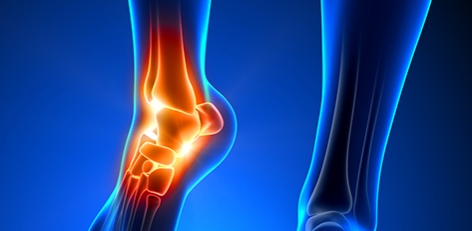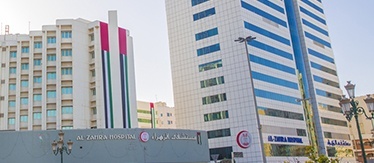Podiatry Department Services
Foot health can directly affect the quality of life and it can restrict the mobility of a person. Hence it is essential to pay attention in foot care. NMC Royal Hospital, Khalifa city introduces foot care or Podiatry clinic for various foot and nail disorders. It also provides preventive care for diabetic patients. A podiatrist is a health professional who deals with the prevention, diagnosis, treatment and rehabilitation of medical and surgical conditions of the feet and lower limbs. Podiatrists treatment include those resulting from bone and joint disorders such as arthritis, soft-tissue and muscular pathologies as well as neurological and circulatory diseases. Podiatrists are also able to diagnose and treat any complications of the above which affect the lower limb.The analysis of function of human motion is called Biomechanics. Podiatrists perform clinical biomechanical evaluation of the lower limb. Specialized equipment, including mechanized treadmills with video and computerized assessment equipment are used by podiatrists to detect pathomechanical anomalies to ensure appropriate and effective treatment. The podiatrists is trained in the manufacturing techniques for a diversity of shoe inserts. The manufacture of palliative and functional orthopedics insoles aids in the prevention and treatment of pressure lesions or deformities, enabling individuals to maintain a more normal, active lifestyle.
Primary objectives of a Podiatrist or Foot care specialist include:
- to limit disability
- to preserve maximum normal function
- to restore the highest possible level of independent activity
A Podiatrist can provide palliative treatment with reduction of pain. She could help to reduce medical complications and therefore reducing chances of hospitalization. Also by removing stress and strain caused by discomfort in the foot she can improve quality of life.
The services provided at Podiatry clinic in NMC Royal Hospital:
- Nails treatment
- Digital injuries
- Treatment of hyperkeratotic injuries (calluses)
- Treatment of Hallux Valgus (bunion)
- Talalgias (heel pain)/ feet pain
- Skin alterations
- Prevention and treatment of diabetic wounds.
- Bio-mechanical assessment of the gait and postural analysis
- realization of customized orthopedic insoles
- medical shoes
Podiatry services:
Postural Analysis / Biomechanical Assessment Human upright posture is an unstable position: Continuous activation of postural muscles is required to avoid falling down. The posturopody is a method to study posture.
Clinical symptoms may fall into three categories:
- Pain syndromes, mainly the vertebral axis and headaches
- Instabilities
- Coordination mobility
The functional treatment may include: the footpad and the proprioception with a musculoskeletal action and proprioceptive insoles.
DIABETIC FOOTCARE
Diabetes can be detrimental to your feet – even a small cut can produce serious consequences. It may cause nerve damage, impaired feeling and blood flow in the feet and making it harder to heal an injury or resist infection. The impaired sensation could make a foreign object in your shoe unnoticed. As a result you could develop a blister or a sore, which could lead to an infection.
Follow these guidelines to avoid further complications: Get periodic foot exams - Consult podiatrist on a regular basis can help in preventing foot complications
- Inspect your feet daily – regularly monitor for cuts, blisters, redness, swelling and nail problems. Use a magnifying hand mirror to look at the bottom of your feet.
- Wash your feet in lukewarm (not hot!) water - Use only lukewarm water and keep your feet clean by washing them daily
- Be gentle when bathing your feet - Wash them using a soft washcloth or sponge. Dry by blotting or patting and carefully dry between the toes.
- Moisturize your feet but not between your toes - Use a moisturizer daily to keep dry skin from itching or cracking. But don’t moisturize between the toes. This may encourage fungal infection.
- Cut nails carefully. Cut them straight across and file the edges - Don’t cut nails too short, as this could lead to ingrown toe nails. If you have concerns about your nails, consult your podiatrist.
- Never treat corns or calluses yourself - Visit your doctor for appropriate treatment.
- Wear clean, dry socks - Change them daily. Avoid tight elastic bands (they reduce circulation). Don’t wear thick or bulky socks (they can fit poorly and irritate skin).
- Wear socks to bed. If your feet get cold at night, wear socks. NEVER use a heating pad or hot water bottle.
- Shake out your shoes and feel inside before wearing - your feet may not be able to feel a pebble or other foreign object, so always inspect your shoes before putting them on.
- Keep your feet warm and dry. Don’t let your feet get wet. Keep the feet and interdigital spaces dry.
- Never walk barefoot. Not even at home! Always wear shoes or slippers. You could step on something and get a scratch or cut.
- Take care of your diabetes. Keep your blood sugar levels under control.
PODOPEDIATRY
Podopaediatry is an area of podiatry focusing on the treatment of children and the various diseases that can affect a young person’s lower limbs.
Occasionally infants can have subtle developmental problems, which can be harder to diagnose and therefore go untreated. The younger the individual, the more elastic their bones and joints are and it is easier to treat. When a child must consult with a Podiatrist?
- If you see asymmetry (a difference) either in the structure or function of the foot and or leg, the child should be examined
- If there is a strong family history (parents, grandparents, siblings) of recurrent problems such as flat feet, which went on to create problems in adulthood, the child should be examined.
- If the child is slow in their motor development, they child should be examined.
The child should start to be able to sit up independently and crawl around six months of age. The child should start to “cruise” (walk holding on to things) around nine months of age. The child should start to walk independently around twelve months of age. It should be remembered that each child is an individual and they have their own timetable, however, if the child is delayed by three months an examination is warranted. If the child complains a lot about leg or foot pain and/or wants to be carried a lot these could be warning signs of a problem or primarily engages only in sedentary (seated) activities. It would be prudent to have the child examined. The development of legs changes over time. What appears to be a deformity can straighten out during growth spurts. Remember most of these perceived growth disturbances are outgrown. The child is usually “bowlegged” (genu varum) from birth to the age of 3-4. Then the child can be mild to moderately “knock kneed” (genu valgum) between the ages of 2-5 and then straighten out as the child grows. If the genuvalgum gets worse that could indeed be a problem. So what if the child is symmetrically in-toed (“pigeon-toed”) or out-toed (“duck feet”)? Do they need to be checked? Most of us are initially in-toed at birth. All development of the lower extremity (femur and tibia) causes external rotation of the extremity with each growth spurt. Most of the external rotation is complete by the age of six. So if the child is moderately to severely out-toed at birth this typically worsens as the child grows and therefore should be checked. If the child continues to be moderately to severely in-toed beyond the age of six, after most of the external rotational development is completed, an exam is warranted.
Other potential warning signs include:
- Uneven shoe wear
- Rapid excessive shoe wear
- Shoes that become curved or C-shape
SPORT PODOLOGY
Common sporting injuries include plantar fasciitis, Achilles tendonitis, stress fractures, ankle sprains and shin or knee pain are treated by a podiatrist. This treatment may include specific exercises and the prescription of foot orthopedic insoles, from precise measurements of an individual’s biomechanics.
Orthopedics insoles treat and prevent common sporting injuries include plantar fasciitis, Achilles tendonitis, stress fractures, ankle sprains and shin or knee pain. We are trained to locate abnormality and it gives you an opportunity to understand your lower limb biomechanics and the role of correct footwear and/or orthotics. Our Podiatrists use a digital scanner to obtain an accurate model of your foot which then is paired with a customized prescription based on your biomechanics, your injury, your footwear and your sporting needs. For running, walking and sports, a customized orthotic provides shock absorption, proprioception, support and stability, whilst allowing for normal levels of foot and lower limb motion.
MEDICAL PEDICURE
Podiatrists are able to diagnose and treat any complications of the above which affect the lower limb, including skin and nail disorders, corns, calluses, horn and ingrown toenails. Foot injuries and infections are also diagnosed and treated by podiatrists.
A basic area of foot care undertaken by podiatrists is the treatment of various acute and chronic nail conditions, the treatment of which depends on the pathology. Podiatrists have specific instrumentation for painless and effective treatment of these conditions.
ORTHOPEDIC INSOLES
Thanks to the manufacturing developments, the insoles has evolved considerably giving the choice of podiatry to everyone and to giving treatment options which often help in balancing posture and optimize performance.
- No results found.





